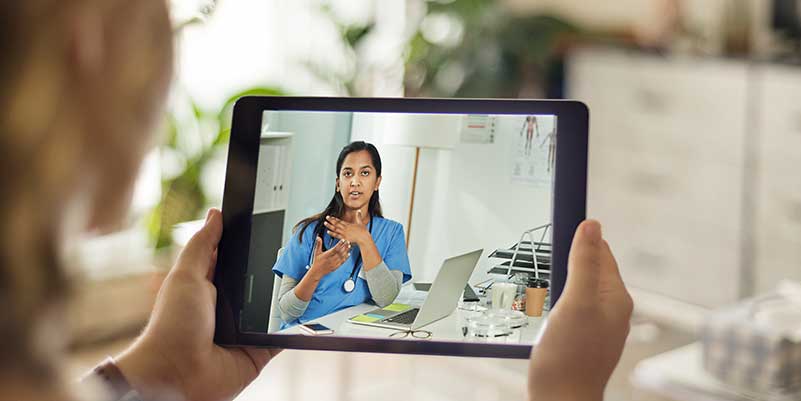― Dr. Rishi Bhatnagar, Aeris President India
As doctors, nurses, and healthcare professionals worldwide continue to battle the novel coronavirus pandemic, the global healthcare industry is working hard to develop new methods to support health infrastructures that are being taxed to their limits.
In India, the world’s second most populous country, the India Times has reported more than 67,000 cases of COVID-19 as of May 11, 2020, with the number of cases increasing by the thousands each day. COVID-19 represents a daunting challenge for India’s healthcare system, which has faced perennial shortages of both resources and staff. According to the Center For Disease Dynamics, Economics & Policy (CDDEP), India’s healthcare resources are unevenly distributed throughout its 37 states and union territories, and the country as a whole is facing an estimated shortage of 600,000 doctors and two million nurses.
Faced with the challenge of accessibility and limited resources, India’s healthcare industry is turning to telemedicine as a potential solution, both for its fight against COVID-19 and its broader ongoing healthcare shortages.
Blending Communications Technology with Medical Science
Telemedicine, or telehealth, is the distribution of health-related services and information via electronic information and telecommunication technologies. When access to care is restricted by rural settings, a lack of transport or mobility, limited funding, or a lack of staff, telemedicine can enable healthcare providers to bridge the gap. Depending on the need, telemedicine can offer simple solutions, such as two clinicians discussing a case over video conferencing, or more complex procedures, such as robotic surgery occurring through remote access. It allows long-distance patient and clinician contact, care, advice, reminders, education, intervention, monitoring, and admissions.
To achieve remote care of patients and enable real-time connectivity and information exchange, telemedicine and telehealth infrastructures utilize the Internet of Things (IoT). The effectiveness of telemedicine depends on the extent and accuracy of the data being gathered. IoT-enabled remote diagnostic tools provide information about a patient’s condition and enable doctors and nurses to accurately diagnose conditions wherever their patients may be. And as 5G begins to emerge, these tools are becoming even better so that healthcare professionals will be able to detect serious conditions earlier and offer targeted treatments, significantly increasing the quality of care that is possible with telemedicine.
The Solution to India’s Healthcare Shortfalls
Dr. Rishi Bhatnagar, President of Aeris India, sees telemedicine as the answer to addressing rural India’s lack of accessible healthcare. “The country has a basic need for an increased number of qualified medical doctors, with only one government doctor for every 10,189 people,” Bhatnagar said. “Telemedicine is a promising way forward for improved medical care in both rural and semi-urban regions in the country. The Indian government is committed to providing equal access to quality care to all, and digital health is a critical enabler for the overall transformation of the health system.”
India’s health ministry has buoyed the use of telemedicine solutions to help fight COVID-19. In late March, they issued telemedicine guidelines that enabled doctors to write prescriptions based on telephone conversations, reducing the risk of transmission for both medical professionals and patients. Virtual doctor visits also are proving effective in allocating COVID-19 testing in remote areas where quality healthcare is difficult to reach.
“[The Indian] government must join hands with private healthcare players to actively encourage people to seek consultations through the telemedicine services,” Bhatnagar said. “Taking the telemedicine route will help in bifurcating the seriousness of the patients in several aspects, from the requirement of hospitalization to home care. Doctors can check patients’ symptoms through teleconferencing, advise them about medication and precautions, as well as tests required, and refer them to a healthcare facility in case their symptoms aggravate. Arrangements also can be made for pathologists to be able to collect samples from home.”
Universal Connectivity is the Major Challenge
Even after the COVID-19 crisis passes, 100% implementation of telemedicine in rural India will face challenges. To effectively deliver telehealth services, operators must maintain policy and standards in regards to national data privacy policy, user authentication, and doctor-patient confidentiality. The telemedicine infrastructure also must offer seamless connectivity and authorized access to electronic patient health records, along with proper data encryption, network security, and guaranteed reliability.
Though India has one billion-plus mobile phone subscribers, and there has been a great improvement in last-mile connectivity, there still are pockets of the population that do not have access to the internet, a regular power supply, and digital infrastructure to support delivery of high-end telemedicine facilities. However, with proper investment in IoT infrastructure, telemedicine can be a significant addition to a long-term solution for India’s healthcare challenges.
Aeris Provides Unparalleled Connectivity for Telemedicine
Aeris helps healthcare providers increase patient wellness and reduce risk by providing reliable IoT connectivity anywhere in the world. Through the Aeris Intelligent IoT Network, patients have access to improved health outcomes and a higher quality of life with real-time support and interventions. As advanced IoT healthcare devices improve medical adherence and patient care oversight, they also lower the overall price of care. With our unparalleled IoT infrastructure, Aeris enables providers to expand their reach into underpopulated rural areas, address medical compliance issues for insurance companies, and gather data to produce life-saving medicinal adherence insights.
Learn more about our contributions to healthcare IoT connectivity by visiting the Aeris healthcare page, and contact us today to see how IoT can enable your telemedicine solution.



